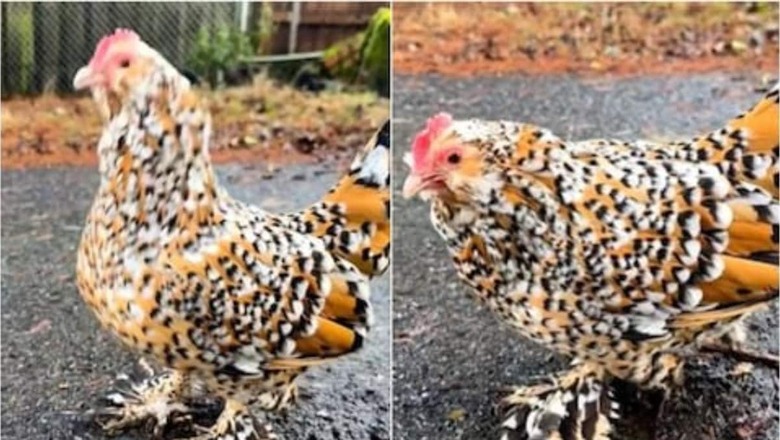
views
The Booted Bantam, or Dutch Booted Bantam, is a unique chicken breed recognised for its varied feather colours such as yellow, black, and white, creating a distinctive ‘suit’ appearance. These birds are also characterised by long feathers on their feet and legs, giving them a fashionable, booted look. This rooster exudes a gentlemanly charm, and a video featuring this stylish chicken is gaining popularity.
The @gunsnrosesgirl3 user shared an 8-second video of the Booted Bantam Chicken on the social media platform X (formerly Twitter). The caption highlights the chicken’s distinctive feature of having a substantial amount of feathers on its legs. The video has garnered 49 lakh views since its posting, and it’s recommended for those who appreciate brief yet captivating content.
The Booted Bantam chicken is known for having abundant feathering on its feet. bestlittlehenhousepic.twitter.com/t1QRX6TDD2
— Science girl (@gunsnrosesgirl3) December 21, 2023
Az-animals.com reports that Booted Bantam chickens are recognised for their unique long feathers on their feet and legs, creating the appearance of wearing long boots; these leg feathers can reach up to six inches. As omnivores, they have a preference for insects. The chickens exhibit a diverse range of feather colours including yellow, red, blue, black, white, golden, orange, silver, light grey, and more.
The history of the Booted Bantam is intricate, involving Belgian bantams, the German Federfüßige Zwerghühner, the Dutch Sabelpoot, and bantams in the United Kingdom. Feather-footed bantams have a centuries-old presence in Europe, depicted in the works of Ulisse Aldrovandi, and Aelbert Cuyp in the 17th century, and Eleazar Albin in the 18th century. Albin’s 1738 description notes long stiff feathers on the thighs resembling boots, extending beyond the knees, with feathering down to the toes. He attributes the origin of these birds to ‘Bantam in India.’
The Booted Bantam wasn’t initially included in William Tegetmeier’s first British poultry standard in 1865 but was later described in detail in his 1867 work, ‘The Poultry Book.’ Tegetmeier notes that a pure white variety had recently been exhibited. Both the white and black varieties are believed to have been bred in the United Kingdom. The black variant is documented from at least 1841 when William Flamank Entwisle received a pair as a gift.




















Comments
0 comment